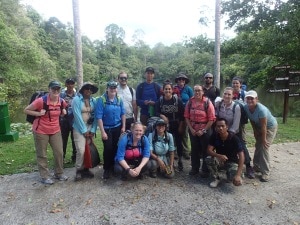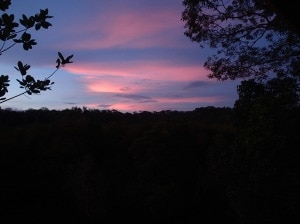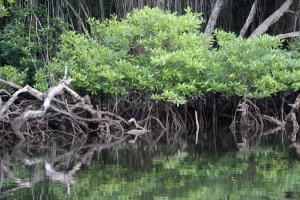Day 5 and 6
On day 5 “Team Borneo”, our unofficial group name, embarked on a slight adventure through the Sepilok laut trail to reach the Mangroves at the Sepilok laut reserve. Despite the occasional struggles along the way due to the heat and humidity adding some difficulty to the already semi-strenuous hike, it was a great experience to go through the various forest areas. We watched as the soils and plant life changed as we got closer to the riparian areas and the mangroves.

Our arrival at the Sepilok laut reserve was quite amazing. The sun was on the brink of setting, leaving everything in a golden glow. After being on the ridge trail for nearly 9 km, it was refreshing to have this inundation of water all around us and the amazing, abstract root structure of the mangroves. We posted up at different spots of the camp to watch the sun set and relax before the night boat tour.

We got to enjoy both a night and early morning boat tour to look at the various types of roots, tree species, and some animals. The most dominant trees that we looked at and collected seeds from were the Rhizophora apiculata and the Xylocarpus granatum. My absolute favorite part was just the structure of the roots and the amazing adaptations these trees have developed to exist is such a fluctuating ecosystem. Due to their habitat being in an estuary, which is the mixing zone of saline waters and freshwater, they have to have an ultra-filtration system to prevent too much salt intake. They also have to have a strong root system in place for stability and aeration in the constant inundation.

It was such a valuable experience to see such a pristine ecosystem of mangroves. While they are such an essential part of coastlines to protect from tropical storms, erosion, and to absorb greenhouse gases and store carbon, they are also extremely beautiful to look at and enjoy though ecotourism. These ecosystems should be preserved all over so many people can come to enjoy their looks and ecological benefits. Hopefully protection continues here in Borneo so classes can come back and enjoy it for years to come.
From within the trees,
Kelsey
